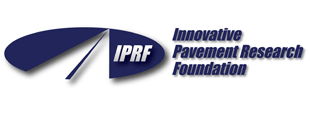ISSUE
In
the course of performing research there will be opportunity to
apply the findings of the efforts by encouraging the use of new
information or technology. Encouragement may take the form of
offsetting the cost of doing a non-standard practice at a higher
cost for the purpose of determining if there are savings and increased
assurance of product performance realized if the new technology
were incorporated into an actual project. Funds are required to
encourage sponsors, owners, or users to use the new technology,
as well as to assemble performance data and analyze and report
those data.
RESEARCH
The Program Coordination
Group may identify a field demonstration project that will incorporate
new technology or different construction practices. This project
is a non-specific effort to sponsor the incorporation of new technology,
change specifications, alter a construction procedure, or change
the design of an airport project. Examples of potential projects
include:
- Additional,
unique data collection on a test section while other research
is ongoing. (Piggyback on other research projects)
- Offset expenses
for a project designer to document construction and performance
of an unusual airfield pavement technique (e.g. post-tensioned
or pre-stressed PCC pavement).
- Data collection
on a new or upcoming pavement problem, such as pavement ride
quality and impacts to airframes.
The nature of this
project demands a flexible approach to the research because specific
projects or topics are not selected until the opportunity is presented.
In addition, the project solicitation and reporting requirements
should be simplified to encourage participation because the project
leader may not be a traditional researcher.
Each effort supported
by this project will follow these general steps.
1. Identify need
to implement new technology or practice.
2. Identify a project compatible with the implementation.
3. Solicit a short proposal and cost estimate from the designer,
constructor, owner, or researcher.
4. Approve implementation and funding.
5. Implement technology and practice.
6. Write a DRAFT report documenting the implementation.
7. Review of the DRAFT by a technical committee (ad hoc).
8. Write a FINAL report and publish as appropriate.
9. Monitor the pavement performance and report (as needed).
PRODUCT
The
final product for each selected subproject will be a report that
documents the performance of the new concrete pavement technology
or practice. It is anticipated that reports will be unbound documents,
10 to 15 pages long. In some cases, the Program Coordination Group
may ask the project leader to make a presentation of the results
at a conference in addition to or in lieu of a formal paper.

| Have
Questions? |
| Contact
Jim Lafrenz, Cooperative
Agreement Programs Manager |
Phone:
202-842-1010 |
